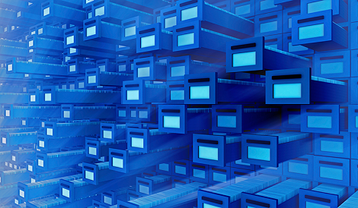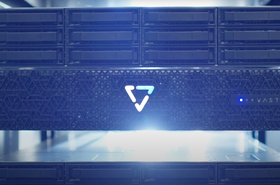We all know that data is becoming increasingly valuable as a resource, just as we’re also aware that the amount of data being generated will continue to grow exponentially. This is exemplified by the enormous growth of the data center market. In 2020, IT spending on data center systems worldwide is estimated to amount to as much as $208 billion.
While traditionally most data can be stored in a database, increasingly new technologies are also producing new data formats. Sensor data, video footage, and other types of unstructured data are all expected to rise dramatically. This rapid development will have an enormous impact on both the storage market in general and on how individual companies manage their data. IT decision makers and manager alike must start planning for the future.
Standardizing management
Every smart business should be looking to unlock the power of its data. But first, this data must be made more manageable. Here, conventional tools are falling by the wayside and powerful hardware and standardised data management are needed.
The key aim should be to introduce as much standardization as possible. For example, businesses should look to centralize the administration of existing storage systems, ideally through a single interface. Data will be much more easily sorted, controlled, and utilized if it can be more universally understood.
Hybrid storage and tiering systems
Many companies desire (or need) to use a combination of local storage and cloud platforms. This is because wherever fast access to large amounts of data is required, the local provision of SAN or other storage systems is still essential. However, it is also important to store less frequently used data in the cloud for backup and archiving purposes. To optimize how storage is allocated, tiering mechanisms are used which automatically decide where location data is stored.
Artificial intelligence powered by fast storage
Another trend that is likely to have a profound influence on storage solutions is the rise of artificial intelligence. This is where large amounts of data come into play, especially during the machine and deep learning phase. During this phase, the existing data is examined for certain characteristics by the AI system which is then "trained" accordingly.
Wherever GPU-based computing systems are used, the rapid exchange between the AI and the underlying storage unit plays a decisive role. Ultimately, the same lessons apply here: find the right mixture of local and cloud-based storage systems. That is what counts.
Local data centers for faster connection
Cloud providers are increasingly recognising that they need to deliver the fastest possible connection to corporate infrastructure. So new data centres from the likes of Microsoft and Amazon are being built ever closer to the user’s location, helping to eliminate or at least temper issues with slow connection to the cloud server.
This also applies to smaller cloud providers which are much more decentralized and regional than the likes of Azure or AWS. In these examples, a strong internet connection is required but it can be achieved more easily, with the help of smaller, more local data centres. This type of regional provider then represents a healthy compromise in terms of cost and performance. These regional providers can often act as a high-speed connection points to public clouds to enable multi-cloud solutions.
Backup and recovery solutions must fit the requirements
Ever-growing data levels will also affect backup and recovery: The recovery of petabytes of lost data is a lot more challenging than that of a gigabytes or terabytes. This is equally true for archiving large amounts of data, though it is naturally less time-critical than recovery. Here, other advancements, such as intelligent indexing, or the storage of meta-data, will play a crucial role. This is because unstructured data such as video, should also be as easy to locate as possible.
High-Performance Computing arrives in medium-sized businesses
In the not-too-distant-future, even medium-sized businesses will no longer be able to function efficiently without HPC solutions. While in the past, HPCs were almost exclusively the domain of universities and state-owned computer centres, the amount of data that will be generated by medium businesses will require an HPC environment to be efficiently processed.
As the volume of data increases, HPCs will be necessary wherever computing and storage-intensive simulation applications are used. For instance, one use case may be a large engineering office with highly complex calculations that require local and high-performance computing units for the calculation and visualisation of 3D objects. Without an HPC environment, the amount of data involved in such a process would either be extremely time-consuming or simply impossible to process.
What’s next?
Storage is undergoing significant change already, but there is much more to come. These new advancements include object storage for improved indexing and metadata allocation, and storage-class memory for faster, latency-free access using smarter tiering mechanisms. In addition, flash technology in the form of SSD components will continue to assert itself, while also supplanting the classic hard disk in the corporate environment.
When it comes to performance, the NVMe (Non-Volatile Memory Express) protocol will begin to roll out on a much larger scale. It is a new protocol for accessing high-speed storage media that brings many advantages compared to legacy protocols. The NVMe storage protocol offers significantly higher performance and lower latencies compared to legacy SAS and SATA protocols. The rise in NVMe storage protocols will signal a new era for powerful and scalable storage clusters, especially at a time when companies are rethinking how to harness and analyze increasingly vast amounts of data.
It’s certainly an exciting time to be in storage, with the next generation of storage already coming into play, and more innovation on the horizon. Such innovation will empower companies to unlock their data and harness its potential. The rise in data volumes and emergence of new storage trends will continue to fuel an already flourishing data center market.





